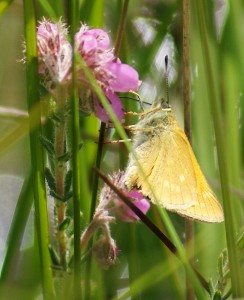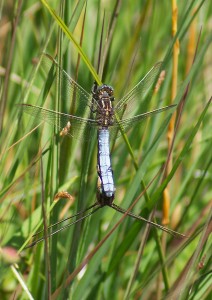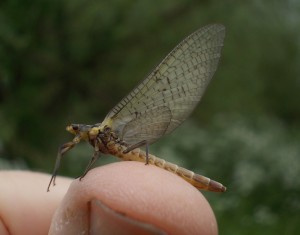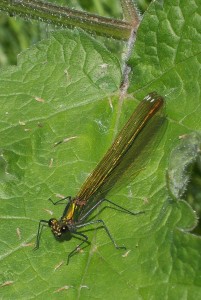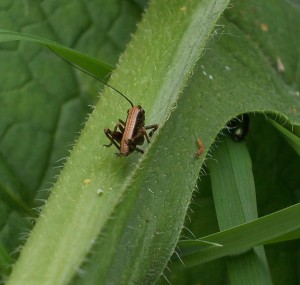
Thursley Common on a sunny July day can shimmer with the wings of dragonflies. Today, hundreds of Keeled Skimmers, joined by plenty of other species large and small – from the mighty Emperor to the dainty Small Red Damsel, made the air seem to sparkle as brightly as the water beside the boardwalk. There were Keeled Skimmers perched alertly on stalks, ready to spring into the air at an instant’s notice; Keeled Skimmers in tussling pairs, their wings rustling and scuffling as they clashed in brief, brutal territorial disputes; Keeled Skimmers in groups of four or five, dashing and swerving over the water; Keeled Skimmers over every pond, bog pool, and lakeside.
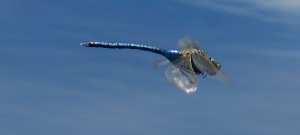
Over one quieter pool, an Emperor Dragonfly patrolled in more stately fashion, almost hovering, drifting forward slowly as if a helicopter pilot was holding the machine’s collective drive stick just a little forward of the hover position, its striped blue tail gleaming in the sun.
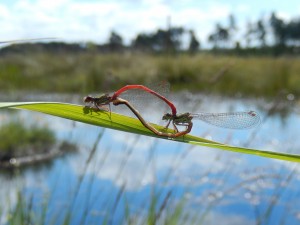
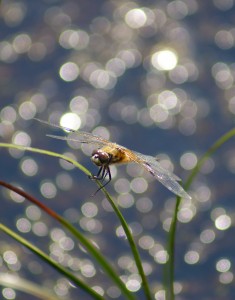
Many of the Odonata were busy laying eggs, from the Skimmers to the damselflies. One or two Black Darters were about: they can be here in large numbers later in the season.

On the sandy heath, the Sand-Wasp Ammophila sought her insect prey, her distinctive shape almost dragonfly-like with an extremely elongated red waist leading to a plump ‘tail’ to her abdomen.

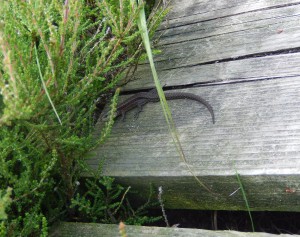
Overhead, a Hobby dashed and stooped, handsome through binoculars, moustachioed, spotted below, its long scything wings like a giant Swift easily outpacing the fastest dragonfly. Below, a lizard rested unobtrusively at the edge of the boardwalk, ready to scuttle into the heather at any threat; another a yard further on. A Reed Bunting rasped out its short scratchy song, skreek, skreek, skrizzick. A Curlew called once; a Skylark soared invisibly high into the blue, singing as if John Keats were at hand to report on the beauty of its song.
